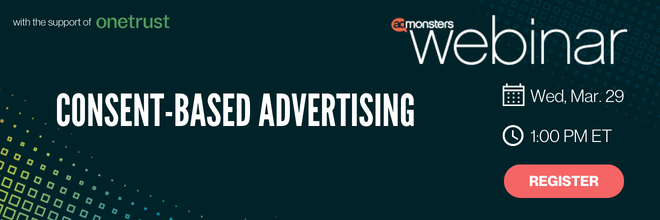
Everyone talks about first-party data being the new oil, but you can’t get to that first-party data without a user’s permission. That’s why consent is quickly becoming the new digital media currency.
With mounting privacy regulations and Apple and Google making sweeping privacy-first ad tech updates, we have landed in the consent-based future. Consent is the currency that will lead publishers to once again build trusted relationships with their audiences to offer them personalized experiences, and at the same time increase the value of those audiences to advertisers. But it all comes down to crafting the right value exchange.
We spoke with Ashlea Cartee, Product Marketing Manager, OneTrust Platform about consent fatigue (yeah, it’s a real thing), the future of compliance frameworks, and whether zero-party data actually makes a difference in bringing advertisers and publishers closer to people.
Lynne d Johnson: I keep hearing publishers and consumers talk about consent fatigue. How is this going to impact user experience and ultimately publisher’s revenue?
Ashlea Cartee: User experience is key. It’s important to put the consumer at the center of how things are being built. It’s also been interesting to see publishers really embrace user experience as they roll out products. User experience is really a competitive advantage and business driver now.
Businesses are coming together to connect the right people to determine how we improve the consent experience overall. At the heart of this is identity. As a consumer, I show up on different devices with a mix of identifiers. Those identifiers are being reduced by the deprecation of third-party cookies throughout tracking, transparency, and also the removal of mobile identifiers. It might vary based on my privacy preferences or my relationship with the organization.
For instance, I might have my identity as a parent, as an individual, or as an employee of an organization. You can’t use technology to tie everything together based on Identifiers and make assumptions without the user’s consent. The creepiness factor comes in when you connect everything based on an assumption. There’s space for the conversation around consent fatigue, the importance of the user experience, and the recognition that you need to find a balance to prevent it from getting too creepy.
LdJ: What can pubs do to streamline the process? It feels like this is an evolution of the conversation around value exchange. What are your thoughts on that?
AC: The value exchange is the entry point. I always think about putting the consumer at the center of the experience. If you’re looking at a subscription model, you’re building that relationship because you want that subscription to continue. If you’re using an ad-supported model, there’s a spectrum of relationships with the consumer. They may have come from some search results or they may be launching into a Pubs app. That’s a much different experience in the sense that they’re anchoring to that pub already. They’re opening that app experience and might be expecting curated content recommendations that are built around that identity. The value exchange is important because it allows you to connect to the consumer in order to give them the right experience.
It introduces the concept of layered notices. It’s not a radical concept, but I think it’s important to focus on. Someone’s going to want to click through and get to the page. Someone else is going to want to read. Publishers should pay attention to the fact that they will get a varied audience. They’re going to be a mix of opinions on how they want their privacy to be honored. There is no one size fits all.
LdJ: There’s been a debate in the ad tech space about a new term zero data. Is zero PD really a thing? And if not, how should we be dealing with this whole one PD versus zero PD? And also how should publishing be leveraging one PD?
AC: When you’re looking at first-party data, you’re oftentimes looking to find alignment between the content you’re producing and the opportunities you’re making available to consumers. Things such as exclusive partnerships, insights or experiences that you wouldn’t otherwise be able to make available to a wide audience. If you can find a more targeted, specific audience where the value is there, those are doors worth opening and they’re going to continue to build that relationship. That’s the value of first-party data.
In terms of zero-party data, I think of it as really direct, very specific, and connecting at a different level. For example, consider a financial institution saying, Lynn, you bank with us. What are your short-and-long-term goals so that we can help you be successful? And let’s say hypothetically, your answer was, I need to buy a new home. I think of that as true zero-party data, very specific to where you are at this moment in your life. Specifically offering information that you thought about before you handed that over. It’s valuable information not just for the business, but also for you. It seems more specific about a moment in time.
It gets you closer to people’s actual needs and what they’re feeling. I don’t feel strongly about what we call it. Perhaps earned data is a new term we can coin which includes both zero- and first-party data. If we set our North Star at the user experiences we’re looking for, we come out with a win.
Register for our upcoming webinar with OneTrust about how consent-based advertising can help to build audience trust.

